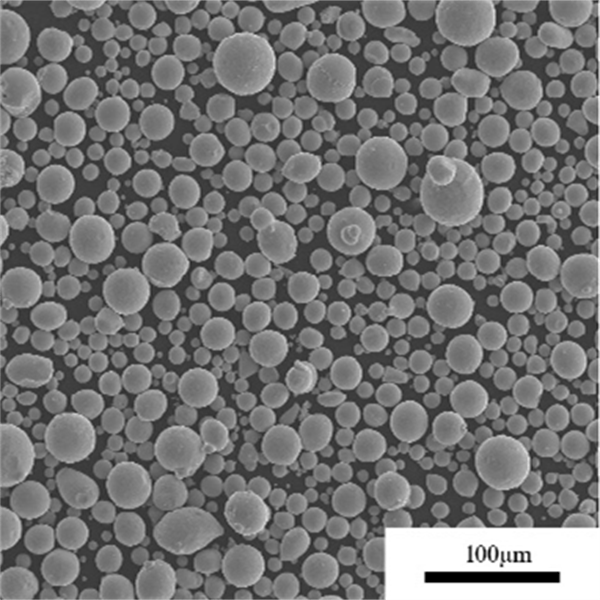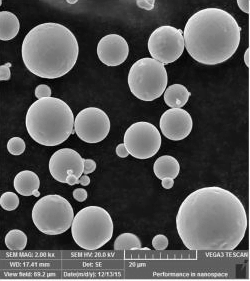
Best Stainless Steel 316L Powder for 3D Printing
Overview of Stainless Steel 316L Powder 316L stainless steel belongs to the austenitic class of stainless steels. The addition of 2-3% molybdenum along with nickel and chromium imparts excellent pitting and crevice corrosion resistance in harsh environments. The ‘L’ denotes lower carbon content to avoid carbide precipitation during welding. Key characteristics of 316L powder include:…
Malé MOQ
Flexibilní zásobování stovkami produktů
Podpora přizpůsobení
Prášek na míru podle odvětví
Rychlé odeslání
DHL Express, bezpečně a rychle přímo do vašich rukou
Overview of Stainless Steel 316L Powder
316L stainless steel belongs to the austenitic class of stainless steels. The addition of 2-3% molybdenum along with nickel and chromium imparts excellent pitting and crevice corrosion resistance in harsh environments. The ‘L’ denotes lower carbon content to avoid carbide precipitation during welding.
Key characteristics of 316L powder include:
- Excellent corrosion resistance in harsh environments
- High oxidation and sulfidation resistance at elevated temperatures
- Very good weldability and formability
- Non-magnetic austenitic structure
- Available in range of particle size distributions
316L powder is suitable for applications requiring excellent corrosion resistance like chemical processing, pharmaceutical, food and beverage, marine equipment and biomedical implants. This article provides a detailed overview of 316L powder.
Chemical Composition of 316L Powder
The typical composition of 316L powder is:
| Element | Hmotnostní % |
|---|---|
| Železo (Fe) | Balance |
| Chrom (Cr) | 16-18% |
| Nikl (Ni) | 10-14% |
| Molybden (Mo) | 2-3% |
| Mangan (Mn) | ¨P 2% |
| Křemík (Si) | ¨P 1% |
| Uhlík (C) | ¨P 0,03% |
| Fosfor (P) | ¨P 0.045% |
| Síra (S) | ¨P 0,03% |
Nickel enhances corrosion resistance while molybdenum addition improves resistance to pitting and crevice corrosion in environments containing chlorides. Low carbon content avoids carbide precipitation during welding.

Properties of 316L Powder
316L powder possesses the following properties:
| Nemovitost | Hodnota |
|---|---|
| Hustota | 7.9-8.1 g/cm3 |
| Teplota tání | 1370-1400 ¡«C |
| Tepelná vodivost | 16 W/mK |
| Elektrický odpor | 0.75 Ã×´Î.cm |
| Youngův modul | 190-210 GPa |
| Poissonův poměr | 0.27-0.30 |
| Pevnost v tahu | 485-620 MPa |
| Mez kluzu | 170-310 MPa |
| Prodloužení | 40-50% |
| Tvrdost | 79–95 HRB |
316L offers excellent corrosion resistance combined with good formability and weldability. The austenitic structure provides good toughness and ductility.
Production Method for 316L Powder
Common production methods for 316L powder include:
- Plynulá atomizace?- Inert gas jets disintegrate molten 316L alloy stream into fine spherical powders with controlled size distribution.
- Atomizace vody?- High pressure water jet impacts and disintegrates molten metal to produce fine irregular powder particles.
- Mechanické legování?- Mletí směsi prvků v kulovém mlýnu, následné spékání a sekundární atomizace.
Gas atomization allows excellent control over particle characteristics like size, shape, oxygen pickup and microstructure.
Applications of 316L Powder
Typical applications of 316L powder include:
- aditivní výroba?- Powder bed fusion, binder jetting processes use 316L powder for chemical, marine, biomedical parts.
- Metal Injection Molding?- To manufacture small, complex components needing corrosion resistance.
- Tepelné povlaky?- Wire arc spray deposition to produce protective coatings in harsh environments.
- Přísady na svařování?- Used as filler material for joining 316L components providing excellent weld strength.
- Chemické zpracování?- Powder metallurgy vessels, trays, baskets used in chemical and pharmaceutical industries.
Specifications of 316L Powder
316L powder is available under different size ranges, shapes and purity levels:
- Velikost částic:?From 10-45 Ã×m for AM methods, up to 150 Ã×m for thermal spray processes.
- Morfologie:?Sférické, nepravidelné a smíšené tvary částic. Hladký sférický prášek zajišťuje optimální tok.
- Čistota:?From commercial to high purity (99.9%) tailored to application requirements.
- Obsah kyslíku:?Levels maintained at 100-1000 ppm for most applications.
- Průtok:?Powder customized for flow rates above 25 s/50 g.
Global Suppliers of 316L Powder
Some of the major global suppliers of 316L powder include:
- Sandvik Osprey (UK)
- Hoganas (Švédsko)
- Carpenter Powder Products (USA)
- Praxair (USA)
- Oerlikon Metco (Switzerland)
- LPW Technology (UK)
These companies produce various grades of 316L powder tailored for additive manufacturing, thermal spray, metal injection molding and other applications.
Pricing of 316L Powder
316L powder prices depend on factors like:
- Úroveň čistoty
- Charakteristiky částic
- Množství objednávky
- Další zpracování
- Výrobce a geografická poloha
| Hodnost | Cenové rozpětí |
|---|---|
| Reklamní | 15-25 USD za kg |
| Vysoká čistota | 25–50 $ za kg |
| Ultrajemný | 50–120 Kč/kg |
| Speciální kvality | 120–250 za kg |
Gas atomized, controlled particle size, high purity powders command much higher pricing over regular commercial grade 316L powder.
Storage and Handling of 316L Powder
316L powder should be handled with care to:
- Prevent contact with moisture, acids etc. leading to corrosion
- Avoid fine powder accumulation to minimize risk of dust explosions
- Use proper ventilation, PPE when handling fine powders
- Follow recommended practices from supplier SDS
- Store sealed containers in a dry, inert atmosphere
Proper protective measures must be taken when handling reactive alloy powders like 316L.
Inspection and Testing of 316L Powder
Key quality control tests performed on 316L powder:
- Chemická analýza pomocí OES nebo XRF pro zajištění toho, že složení bude splňovat stanovené limity
- Distribuce velikosti částic dle normy ASTM B822
- Analýza morfologie za pomoci SEM zobrazování
- Průtok prášku měřený podle normy ASTM B213
- Stanovení hustoty pomocí pyknometru s heliem
- Testování nečistot metodou ICP-MS
- Charakterizace mikrostruktury pomocí rentgenové difrakce
Thorough testing ensures the powder meets the required chemical, physical and microstructural characteristics for the intended application.
Comparison Between 316L and 304L Stainless Steel Powders
316L and 304L stainless steel powders compared:
| Parametr | 316L | 304L |
|---|---|---|
| Kompozice | Fe-Cr-Ni-Mo | Fe-Cr-Ni |
| Odolnost proti korozi | Mnohem lepší | Dobré |
| Cena | Vyšší | Nizší |
| Teplotní odolnost | Lepší | Dobré |
| Schweißbarkeit | Výborný | Výborný |
| Dostupnost | Střední | Výborný |
| APLIKACE | Marine, chemical industry | Consumer products, appliances |
316L offers substantially better corrosion resistance whereas 304L is more economical for less demanding applications.
316L Powder FAQs
Q: How is 316L stainless steel powder produced?
A: 316L powder is commercially produced using gas atomization, water atomization and mechanical alloying followed by sintering. Gas atomization offers the best control of powder characteristics.
Q: What are the main applications of 316L powder?
A: Key applications for 316L powder include additive manufacturing, metal injection molding, thermal spray coatings, and powder metallurgy parts for chemical, marine, pharmaceutical and food industries needing excellent corrosion resistance.
Q: What is the recommended 316L powder size for binder jetting AM?
A: For binder jetting process, the typical 316L powder size range is 20-45 microns with spherical morphology for optimal powder bed density and binder infiltration.
Q: Does 316L powder require special handling precautions?
A: Yes, 316L is a reactive alloy powder and should be handled carefully under controlled humidity and inert atmosphere using proper grounding, ventilation and PPE.
Q: Where can I buy 316L powder suitable for biomedical implants?
A: High purity, gas atomized 316L powder meeting biomedical specifications can be purchased from leading manufacturers like Sandvik Osprey, Hoganas, Carpenter Powder Products and LPW Technology.
Kontaktujte nás nyní
Kontaktujte nás pro aktuální nabídky produktů a skladovou dostupnost.
